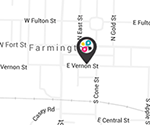
Right now, everyone from Wall Street to small-town Main Street is talking about the big-box brick and mortars. As the world watches the face of retail transform around us, we can't help but theorize and speculate about how they will transition… and wait to see who can survive. This is nothing new; it is but another transition in consumerism. Much like Walmart killed the dime store, in time, Amazon will kill Walmart. It is the life cycle of business: those that pivot and evolve are the ones that continue on.
Harnessing a Social Revolution
Though few have noticed, not-for-profits are in a unique position with strategic advantages. Millennials are coming of age, and forging a new way of life into existence. I know, I know, it is awful, but we are powerless to stop it—we are no match for their endless energy and insane comfort with technology. Unless... Could we harness those attributes? If not-for-profits built programs around these characteristics, and speak to the millennials culture, the not-for-profits could tap into an enormous pre-built social network flush with dedicated engagement.
It seems that nine out of 10 pitches on Shark Tank involves a product or business model based around a social cause. One group handmade one-of-a-kind bags out of old vinyl billboards to keep them out of the landfill and lower the environmental footprint of advertising. My personal favorite is Bombas socks, which donates a pair of socks to the homeless for every pair purchased. And these aren’t just socks—the company went to great lengths to create the most comfortable and durable socks on the market, so it could make a lasting difference in the lives of the less fortunate.
I could go on and on, but the truth is the millennials want to make a difference in the world with everything they do or consume. In a few short years, there will be a name for this social revolution. I believe it is a good direction for our society and the environment. I also love the momentum it can garner for an enterprise. The crazy thing, however, is that not-for-profits are the real O.G.s when it comes to social-cause modeling. So, what happened? Nothing. Nothing happened, and that is the problem. Many not-for-profits are failing to pivot, much like other titans in industry.
Three and a Half Degrees of Separation
I built a product and service line at my company to help nurture fundraising programs and causes. I have employed the knowledge we’ve gained over the years by working with so many great causes. We take pride in our ability to be a resource to anyone in need. The success we see our customers achieve is astounding, and it got me to thinking.
There are so many causes out there fighting for our time, attention and disposable income. And we lovingly give up our evenings, afternoons or Saturday mornings—along with a portion of our wallets—but our true wealth lies in our network. Facebook recently alluded that its platform is proving that the famous notion of “six degrees of separation” is actually much less than six degrees. In short, if St. Jude turned its runners into evangelists and the MDA stopped locking up its supporters and instead unlocked the potential of its network, these not-for-profits have the potential of engaging, and then changing, the world.
How do we harness the millennial’s potential? We do it with their passion through an emotional connection to the cause or project. Our routine creative interview attempts to establish an understanding of a client’s likes and dislikes, as well as the story they would like their design or logo to tell. It helps us create the best work, and get to it in the fewest number of attempts. With a similar approach, the not-for-profit could create apparel that speaks directly to its supporters, and if it speaks to them, it will most likely speak to those in their network.
Through unique campaign customization, the supporter develops real ownership in the campaign. The message is theirs, and the design is a part of them. It is much easier for the average person to tell a story to a stranger than it is for them to ask for money. If every not-for-profit let its supporters tell their stories and how the cause makes them feel, anyone would be dying to get it out into the world. And that is how we can tap into the marketing superpower of the millennials.


 Platt's Printing Co.
Platt's Printing Co.